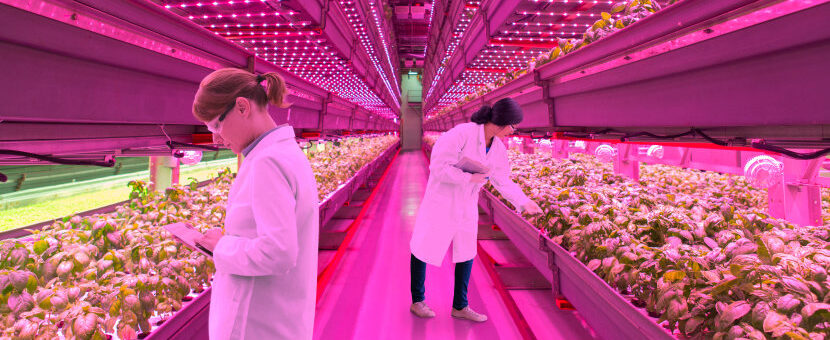When you hear the term light recipe, the first thought that pops in your head is probably for cooking low-fat meals. But for cultivators, a light recipe is a program that controls the lighting for growing plants indoors. LED light recipes are critical not only for cultivating indoor medical marijauna in Ohio, but growing virtually any commercial vegetable crop in a building ranging from cut flowers, herbs, and tomatoes.
Lighting technology has evolved rapidly in the last 20 years as modern horticultural LED lights have quickly replaced hot, environmentally unfriendly, and expensive high-pressure sodium, metal halide, and mercury-based light bulbs. Costs have dropped dramatically for LED lights, with lighting costing over $150 per kilolumen in 2008 to under 88 cents per kilolumen in 2021. Using LED Lights for indoor cultivation and vertical farming has quickly gone from science fiction dreams to reality.
The four main variables for LED lighting recipes.
When modifying the light recipe for cannabis, cultivators consider four variables: timing, spectrum, light level, and uniformity. In order to run a profitable business, a cultivator needs to increase quality and yield of cannabis while decreasing costs. Smart cultivators experiment with changing only one variable at a time to understand what produces the best flowers for their chosen strains.
Timing
A light recipe specifies exactly when to turn the lighting on and off to get the best results based on your building and individual strains. Young cannabis plants may thrive when exposed to light for 24 hours. Maturing plants that have begun to bud may require under 12 hours of light.
Spectrum
The spectrum is the range from ultraviolet to infra-red that influences marijuana plant growth. Full spectrum lights provide the widest range of light. Photosynthesis can be optimized by using a mix of red and blue light. Every light recipe specifies the colors of the LED lighting which can be controlled by an app that adjusts the spectrum.
Light level
The amount of light shed on a plant can be measured in micromoles (µMol), or the number of photons per square meter per second. This is how horticultural lighting is typically measured. Hemp, sativa, indica, and hybrids each have a different optimum light level when grown indoors.
Uniformity
Uniformity is defined as how evenly light is distributed across all the cannabis plants, not just the ones in the middle. Uniform light contributes significantly to uniform plant growth and makes same-day harvesting possible. Moreover, supplementary lighting can be positioned on the side and perhaps even under the cannabis canopy, something that is impossible in outdoor growing.
Interested in learning more about the cultivation of medicinal cannabis in Ohio? Sign up for one of our cannabis horticulture courses today!
References:
https://www.usa.lighting.philips.com/products/horticulture/light-recipe
https://www.statista.com/statistics/216351/price-of-warm-white-led-lamps-in-the-us/

